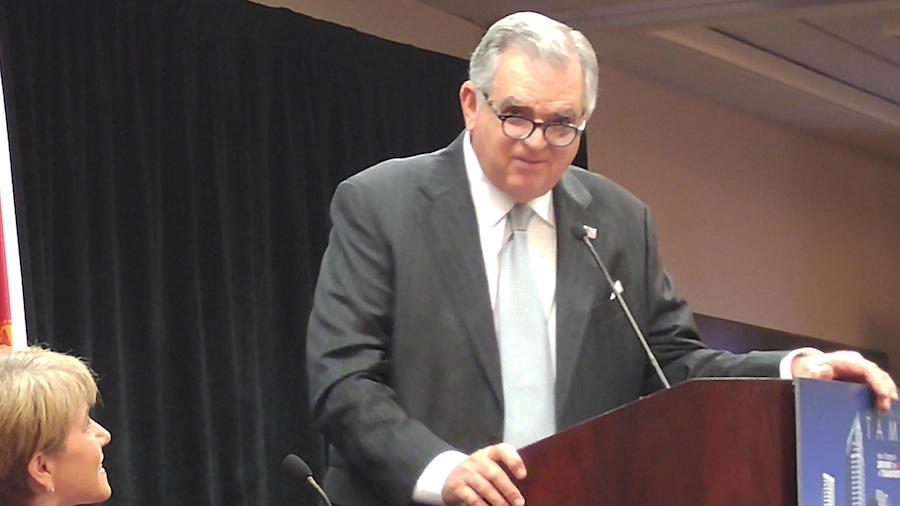State and national politicians and transportation leaders discussing the short- and long-range impacts of automated vehicles at a Tampa “Infrastructure Week” event painted the picture of a dramatically alternative future than previously imagined by many. Whereas only ever-increasing traffic congestion is a current mindset, for example, panelists at the May 17th “All Roads Lead to Tampa” event touted how a system of “largely electric, largely autonomous and largely on-demand” vehicles will transform U.S. society with greatly reduced levels of traffic congestion, reduced fuel consumption, and even lesser need for space at hospital trauma centers.
“We’re in a revolution in the automobile industry,” says Ray LaHood, former U.S. Secretary of Transportation, who keynoted the Tampa event. “We’re in a revolution in terms of technology, in terms of connectivity, and in terms of where we go in the future.”
Arguing that the future, widespread adoption of autonomous vehicles should “save a lot of lives” and greatly reduce injuries, LaHood reminded his audience that this “next generation of transportation” is going to require considerable public investment to outfit the nation’s infrastructure system with the necessary technology to support autonomous vehicles. “It takes money, and it takes leadership.”
Greg Krueger, HNTB’s program director for emerging technologies in transportation, put the safety aspect of autonomous vehicles into perspective when he compared the current number of daily auto fatalities as equivalent a pair of jetliners crashing daily. If the latter situation was occurring, Krueger argued, surely society would find an answer.
“We can do better as a society,” says Krueger. “We can do better as infrastructure builders We can do better than 3.1 billion gallons of fuel being wasted every year (due to traffic congestion). The new technologies really allow us to be better than we were in the past.”
Characterizing the “largely electric, largely autonomous and largely on-demand” vehicle of tomorrow to “the hybrid love-child of Tesla and Uber” was Florida State Sen. Jeff Brandes, chairman of the Senate transportation committee. Brandes sees the current situation as being stuck “between the lightning and the thunder,” meaning that while people can see that autonomous cars are on their way, it remains difficult to understand the future ramifications.
And the “ripple effects” have the potential to “dramatically transform everything we know about transportation,” Brandes says. With autonomous vehicles, “The world looks really, really different. It’s hard to explain how transformational it’s going to be.”
In closing, former Transportation Secretary LaHood brought the discussion back to funding, and this fall’s presidential election, as he asked the rhetorical question of whether there would be leadership in Washington to champion an increased investment in transportation infrastructure. Specifically, LaHood suggested a 10-cent increase in the federal gas tax, coupled with an indexing of the tax to the rate of inflation.
“People in Washington have not been willing to step up with resources,” says LaHood. Going on to describe that bill’s $300-billion annual funding rate as simply sufficient to “keep the status quo,” LaHood added, “That’s why 18 states have passed their own gas tax increases.”


Post a comment to this article
Report Abusive Comment